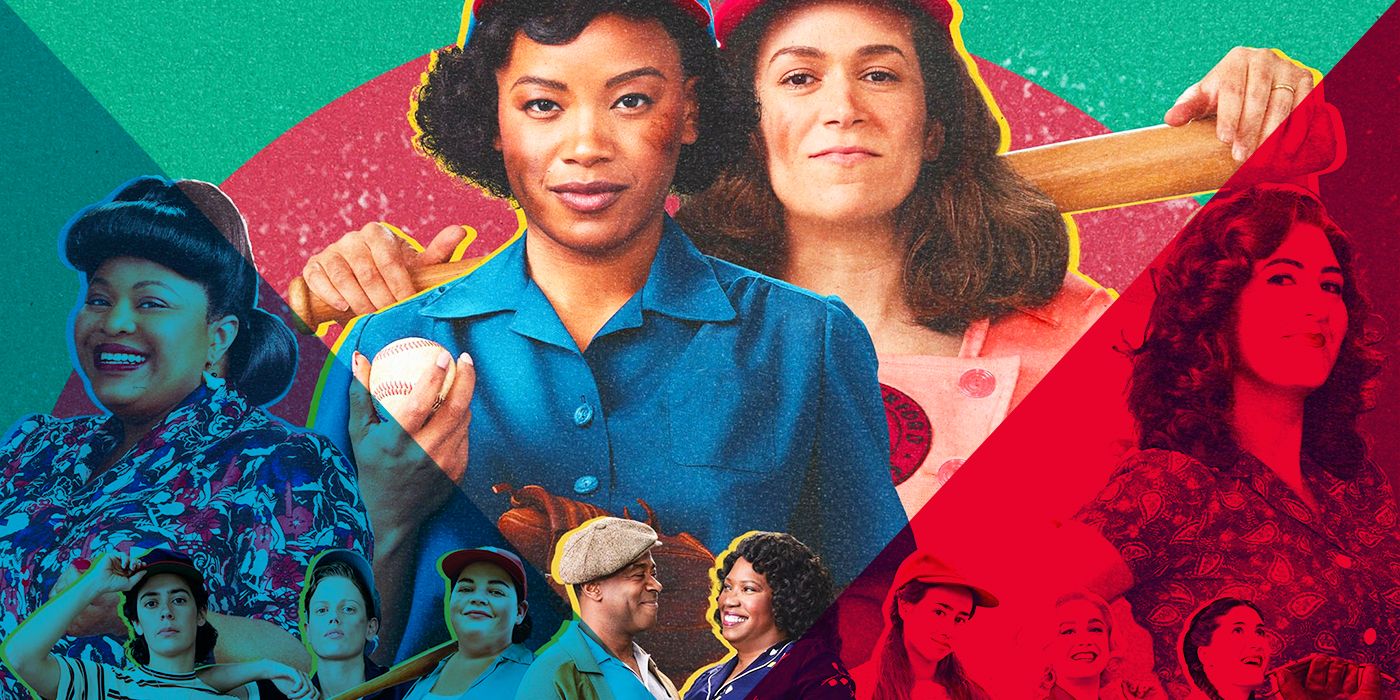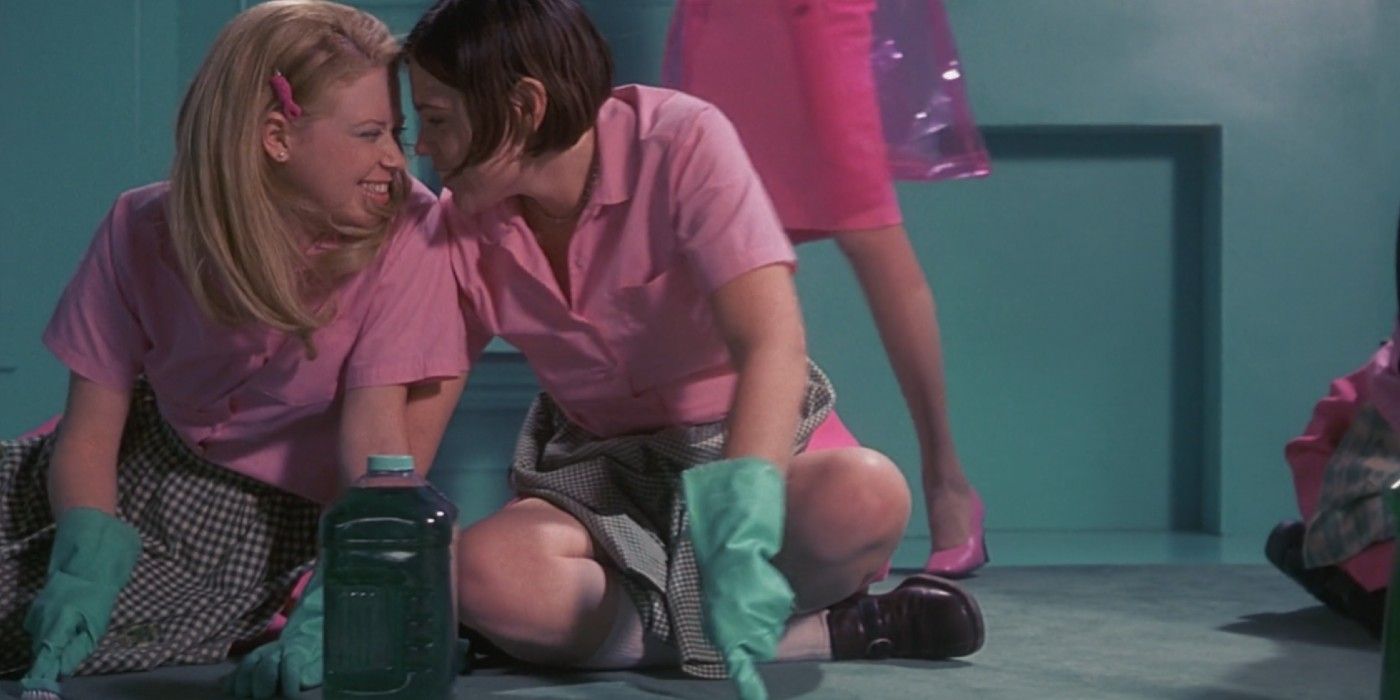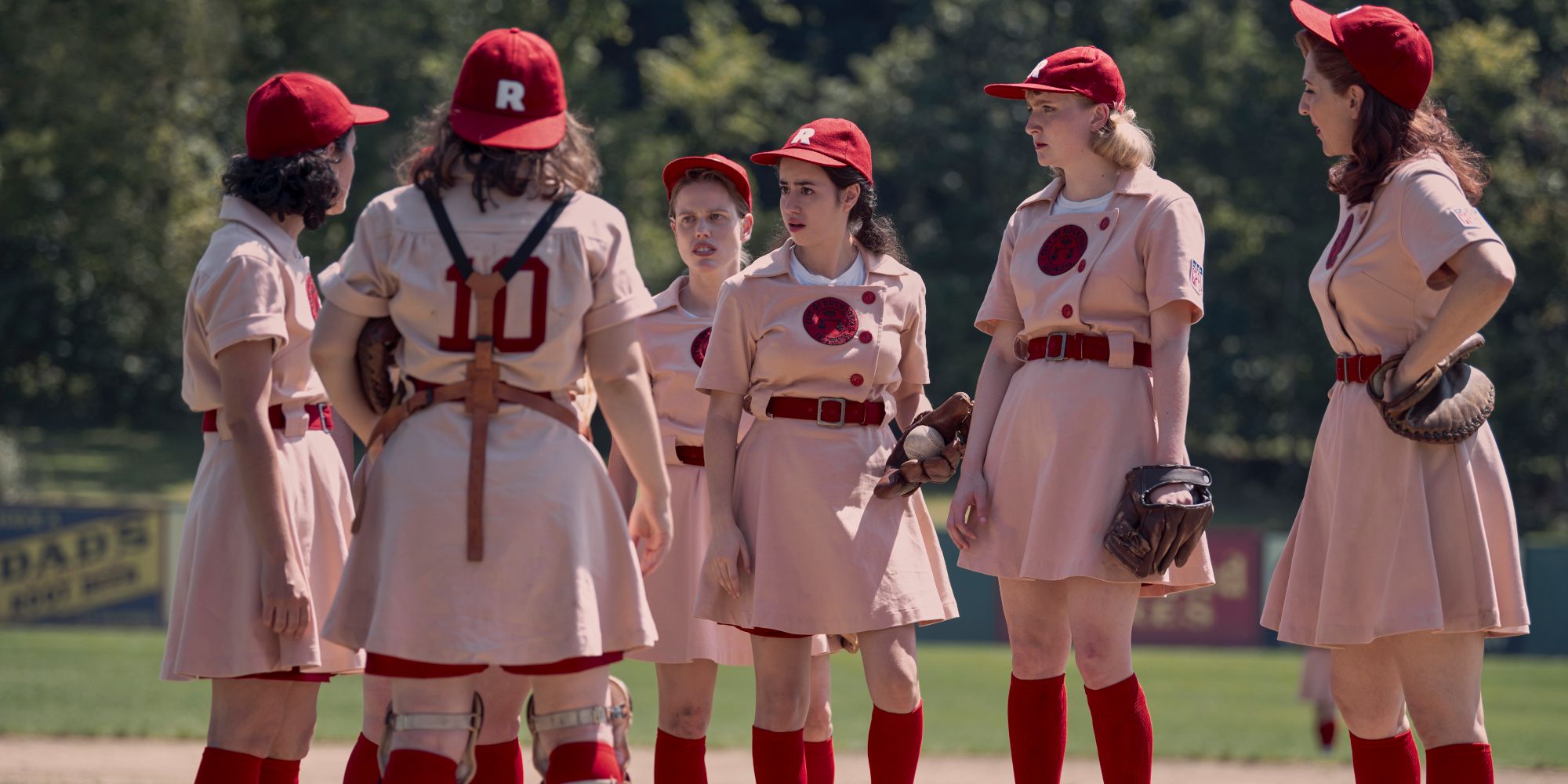The following contains spoilers for A League of Their Own, now streaming on Prime Video.
A League of Their Own is a historical sports drama that touches on romance and the true players of the Rockford Peaches. Created by Abbi Jacobson (who also stars in A League of Their Own) and Will Graham, the series is made by and features many queer people. The first three episodes of the show -- titled "Batter Up," "Find The Gap" and "The Cut Off" -- are directed by Jamie Babbit, who identifies as a lesbian. She cemented herself as a true icon in the sphere of queer filmmaking with her films But I'm a Cheerleader and Itty Bitty Titty Committee, as well as directing a slew of episodes for shows like Only Murders in the Building, The L Word, and Girls. Her works often explore themes of sexuality, gender, romance and comedy, and as seen in the below titles, she deserves her icon status.
But I'm a Cheerleader
Babbit's first feature film But I'm a Cheerleader, released in 1999, became a milestone film for the queer community. The film tells the story of Megan (Natasha Lyonne) as she is sent to the conversion therapy camp "True Directions" for displaying lesbian tendencies. At first Megan denies that she is gay, but she quickly realizes that she is in fact a lesbian. During her stay at the camp, she befriends and falls in love with Graham (Clea DuVall) and the two eventually escape the oppressive nature of the camp and the heteronormativity that it pushes.
What makes But I'm a Cheerleader so iconic is Babbit's sense of design and humor. A story about a conversion therapy camp is typically one of grief and anger, as queer people are often forced to go by homophobic family members who believe that homosexuality is something to be cured. Instead of focusing on the trauma of forced conversion, Babbit crafts a story of perseverance and love that proves that queer love will withstand the pressures of heteronormativity. The scenes at the gay club and at the home of the ex-ex-gays (or former True Directioners who attempt to help current campers) demonstrate that these teens are not alone and that there's an entire community out there waiting for them.
The visual style and design of But I'm a Cheerleader is noteworthy as well. Perhaps one of the most "camp" movies of the '90s, But I'm a Cheerleader's vision of a conversion therapy camp leans into the supposed gender roles of a cisgender, heteronormative society. The girls are expected to learn how to clean and dress femininely while the boys practice "manly" activities like chopping wood. These mimetic roles, combined with the films storybook pink and blue design, turn heterosexuality into a performance rather than the indestructible way of life it is often presented as. But I'm a Cheerleader illustrates the backwards ways that the queer community is viewed and forced to conform to a straight society, using comedy and a touching story of romance to make its point.
A League of Their Own
A League of Their Own features similar ideas and themes as But I'm a Cheerleader and the rest of Babbit's work. In the first three episodes, which Babbit directed, audiences are introduced to the world of women's baseball set in the 1940s. Not only was American society and legislature homophobic at this time, it was also racist and misogynistic. While these themes are hugely important for the plot and the characters' growth, the strength of the communities featured perseveres.
A big part of the first few episodes of A League of Their Own is accepting who you are. The first episode ("Batter Up") presents Carson Shaw (Jacobson) with an eclectic group of women who also chose baseball over the typical life that American society presented women at the time, which was mostly being a housewife and mother. She is rapidly introduced to a group of women who defy the look and attitudes of '40s housewives, many of whom are later shown to be queer. At the end of the first episode, Carson is kissed by teammate Greta Gill (D'Arcy Carden), which turns what she thought was possible upside down.
The remaining episodes follow the thematic and visual direction from Babbit's episodes. Carson and her crew face several threats to their team, but they always rise above. Carson also continues to learn about queer life and what it means to be a queer woman in America. At its core, A League of Their Own posits the Rockford Peaches as a place where these women can rely on each other, and they can accomplish something of their very own.
Babbit's filmography and work, from But I'm a Cheerleader to A League of Their Own, secured her as one of the most iconic queer filmmakers of the 20th Century. Her work has pushed the boundaries of what queer stories can be, and shown that they don't always have to end in tragedy.
A League of Their Own is currently streaming on Prime Video.



